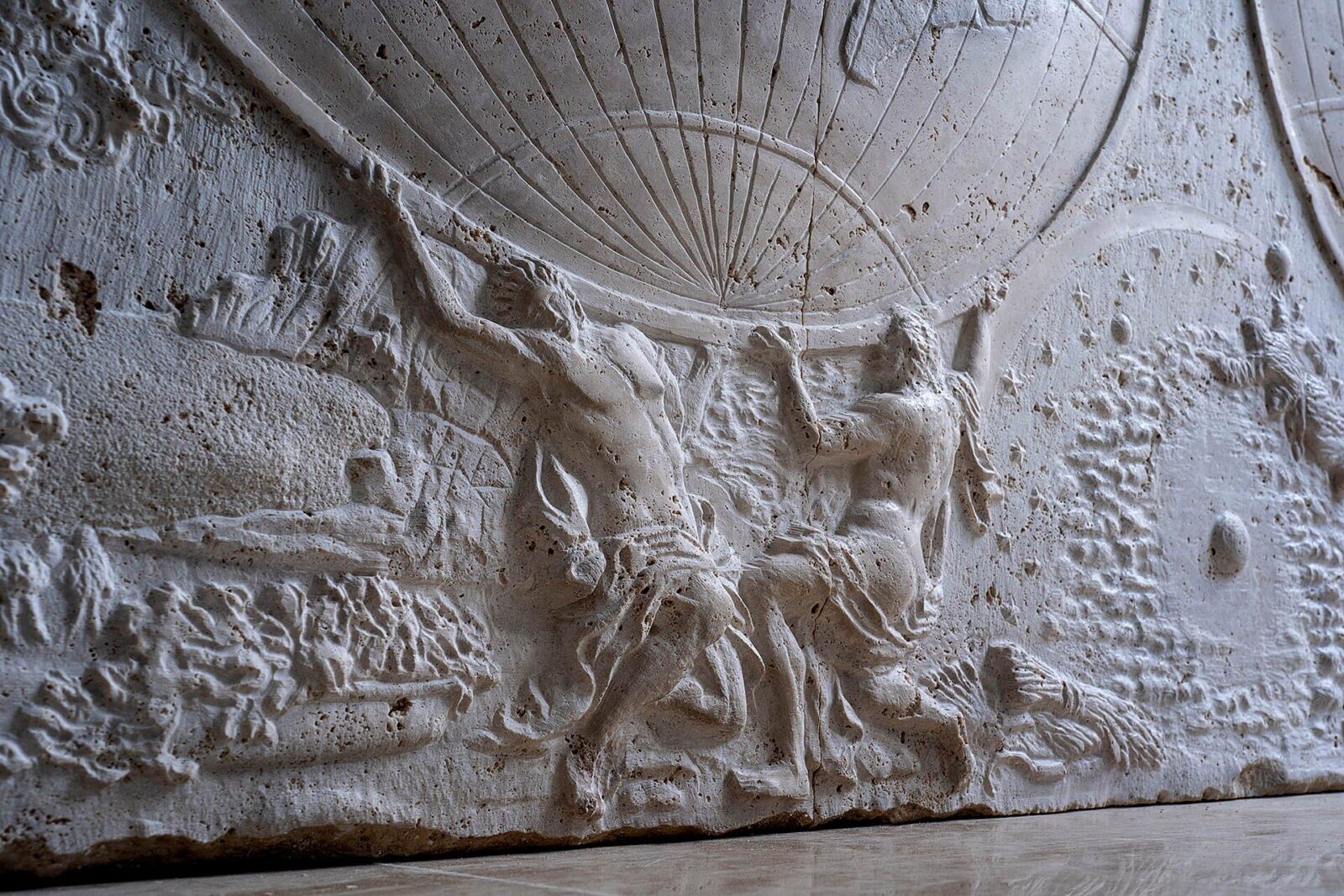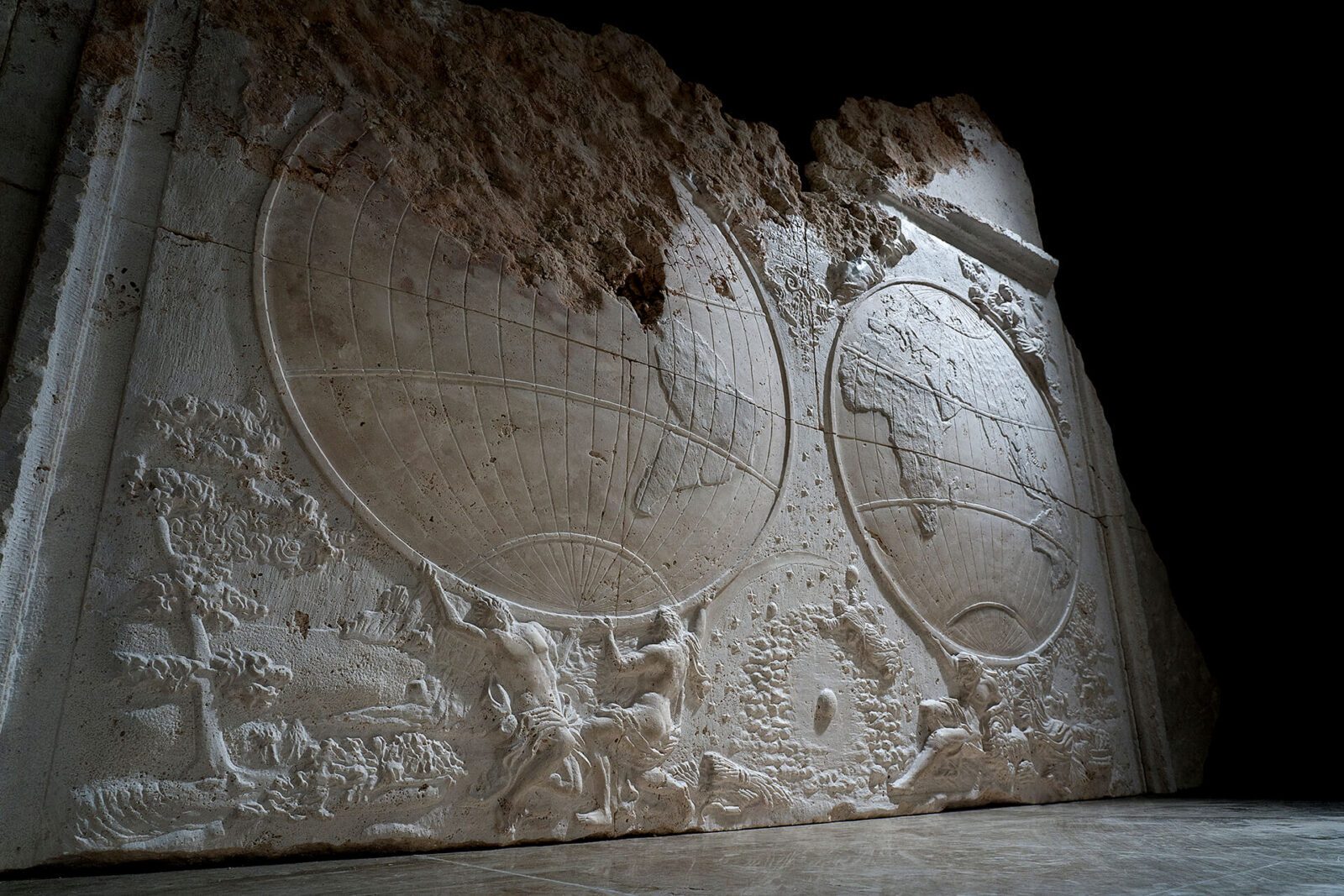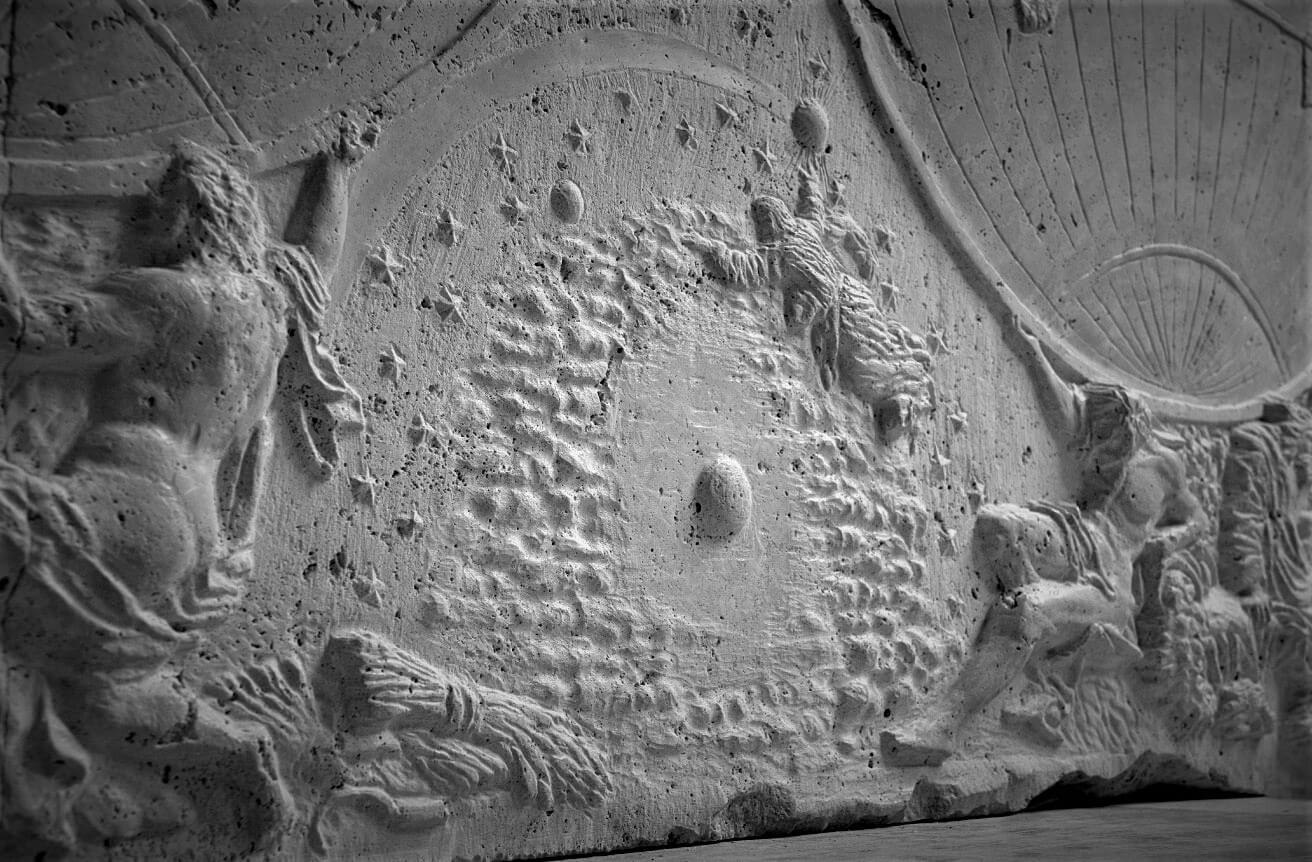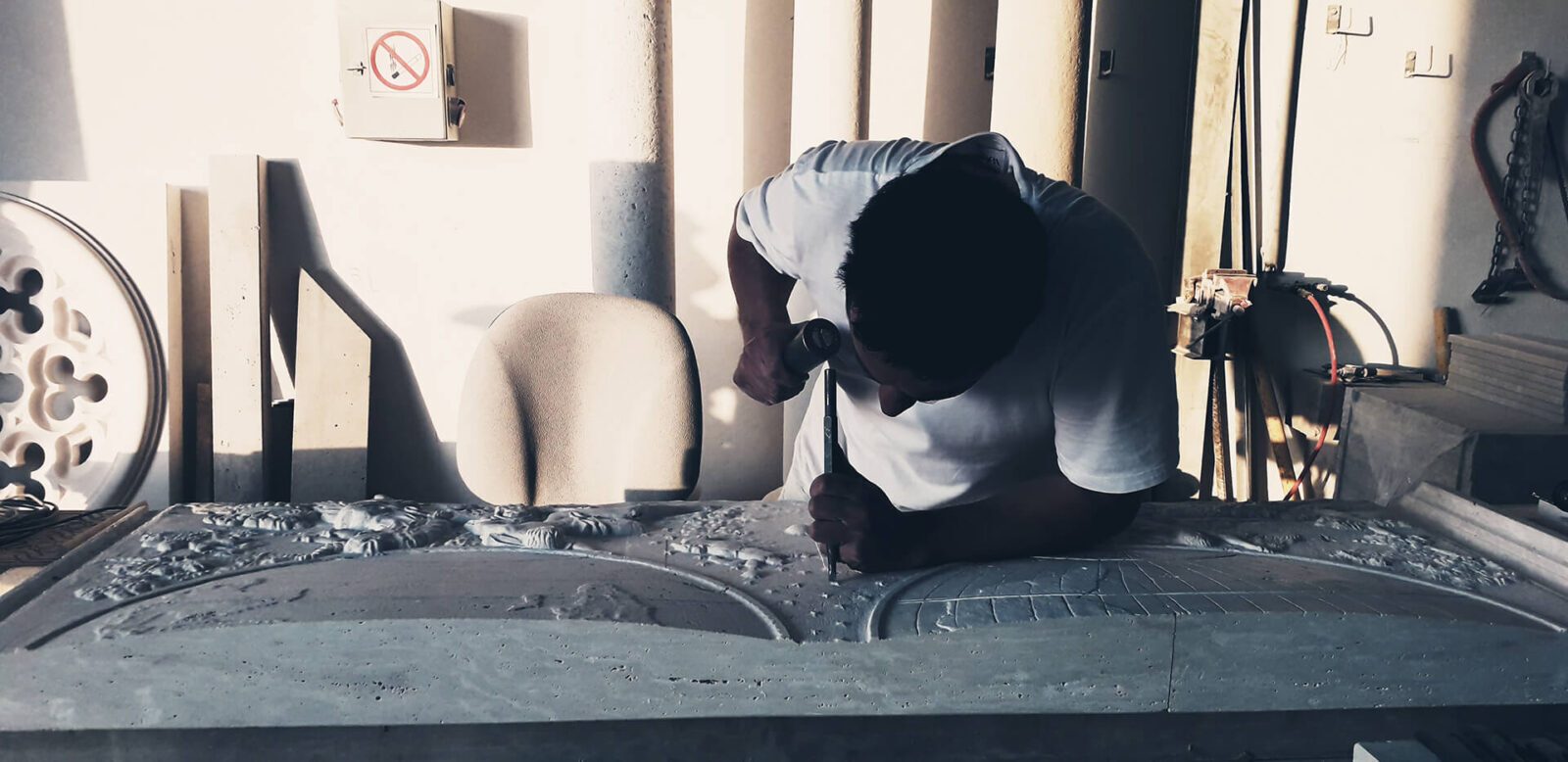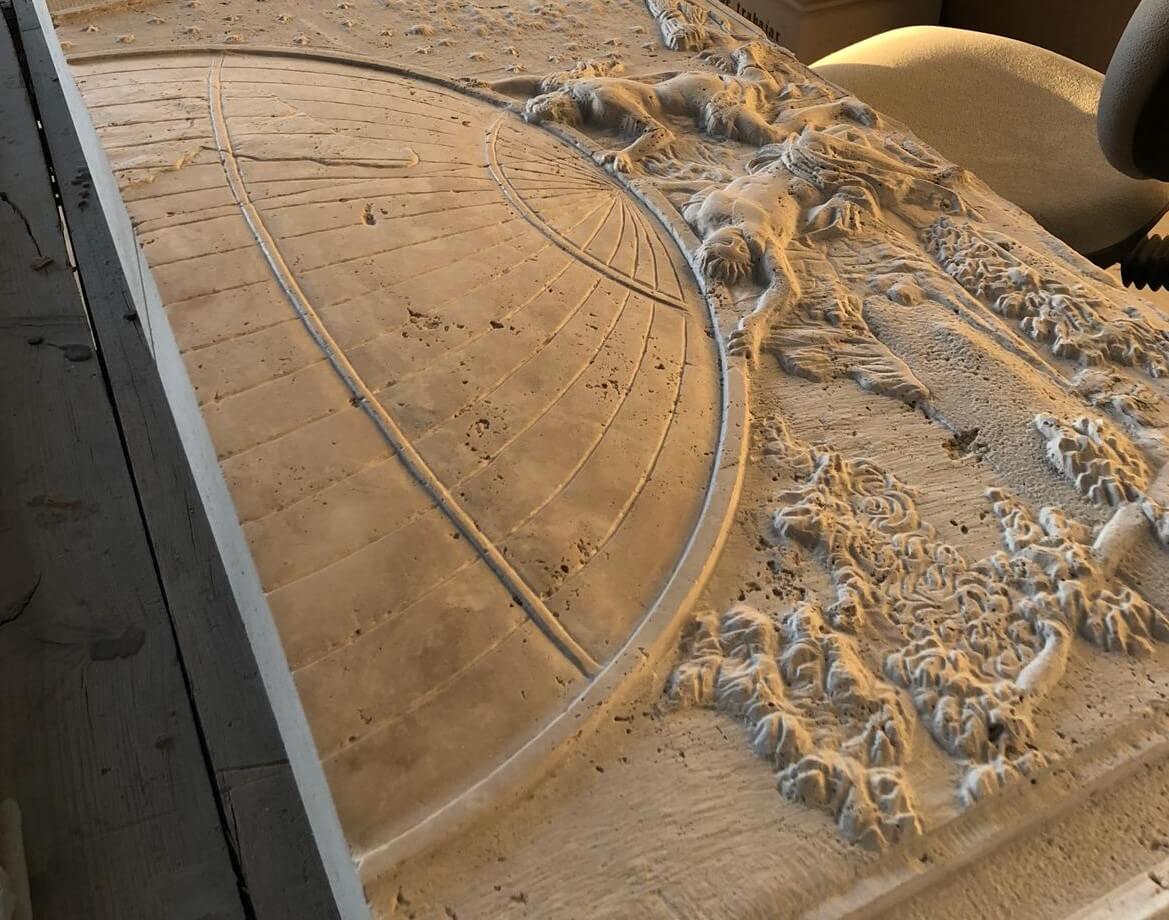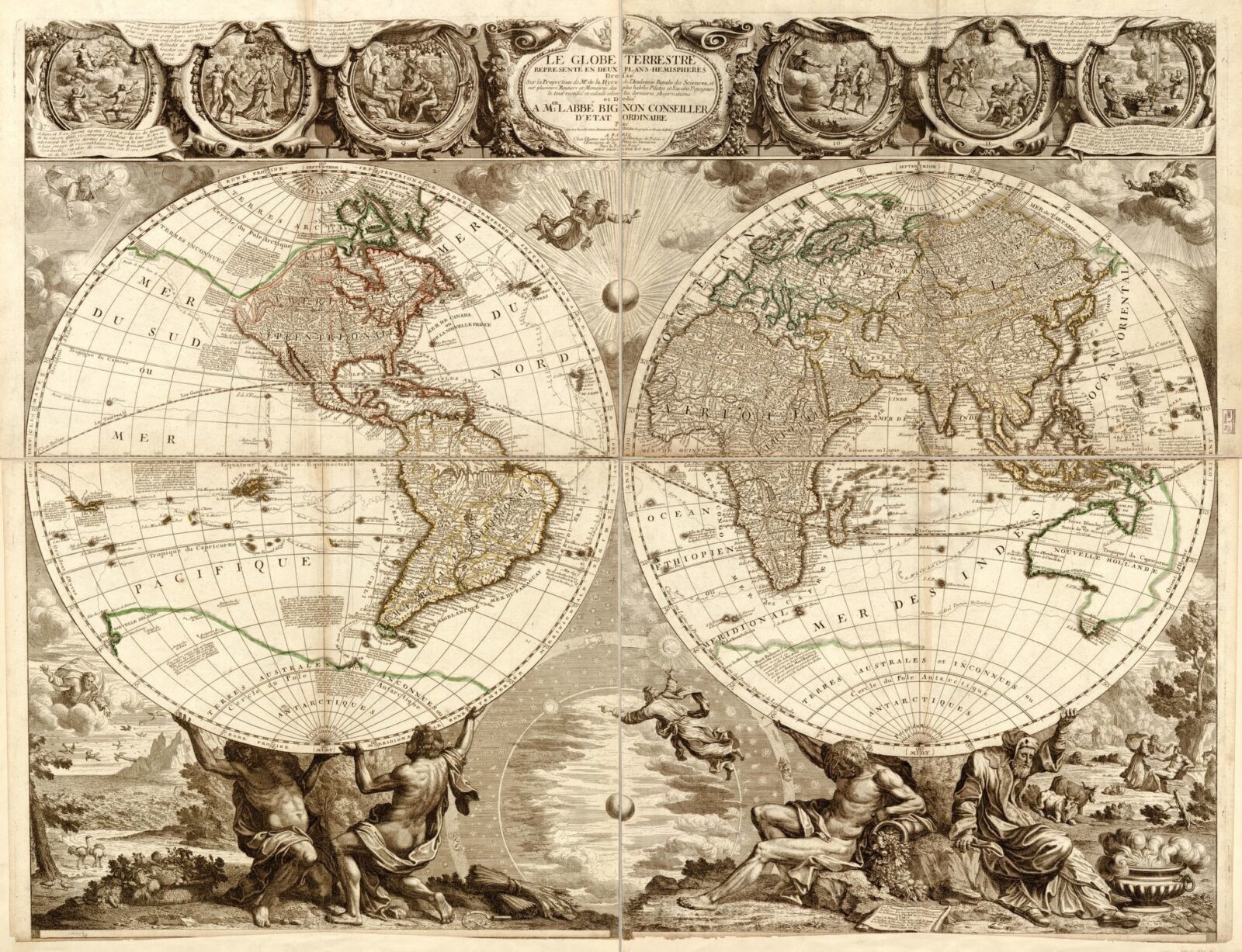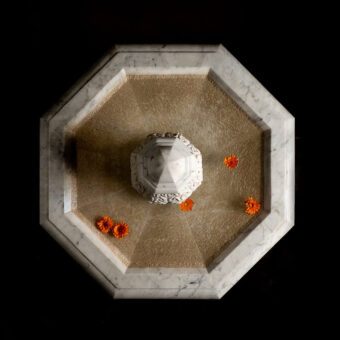HEMISPHERES
Partial reproduction of «NOVA ORBIS TABULA, AD USUM SERENISSIMI BURGUNDIAE DUCIS». ALEXIS HUBERT JAILLOT. PARÍS, 1694. LIBRARY OF CONGRESS, WASHINGTON.
Any curious glance at a map discloses an historical moment of the society that drew it. It seems to be cautiously and beautifully drawn. It is a direct link between artistic and geographical skills. One of the main novelties at that time was the aesthetic element. It was a key part to be available to a wider public who was not only interested in accuracy and latest information, but also in the beauty of each representation.
| Weight | 200 kg |
|---|---|
| DIMENSIONS | 138 CM (H), 325 CM (W), 10 CM (D) |
| MATERIAL | TRAVERTINE CRON |
| DELIVERY TIMES: | 120 DAYS |
Orientating ourselves in the world, finding treasures, imagining trips or even getting lost driven by impulses. A map is the world in the palm of our hands. It is cartography the science, technique and art that elaborates the most amazing maps humans can dream about.
Atlas and maps of the well-known French cartographers added to the monarchy known as real geographers, stole the prestige that Dutchmaps had previously gained. France faced the XVII century with social stability and considerable political changes. Thus, with the absolutist governments of Luis XIII and Luis XIV, the development and production of the cartography were given adequate protection, refuge and patronage that was unknown but adequate in the Europe of that time. Subsequently, as the years went by, they helped Gallic country to be at the head of Europe. It became the center of the geographic science and the cartographers started to produce the most detailed and accurate maps. One of the key figures here was the author of our map: Alexis Hubert Jaillot (1632-1712).
He gave up his first work as sculptor because of his marriage to the daughter of a famous maps illuminator. Such event caught his attention and interest so much that he decided to join together with Nicolas Sanson’s son -founder of the brilliant cartographic Renaissance –to start his career as editor. This strong bond allowed him to publish several maps and atlas which were embellished with sophisticated designs as representation of his previous artistic skills. Afterwards, in 1686 he was given the title of “geographe du roi”.
The double hemisphere, partly reproduced in marble, was published in his “Atlas royal”1694-99. The titles in French and Latin are a dedication to the Duke of Burgundy known as the “Grand dauphin of France” or “Monseigneur”. The signature of Cesare Ripa in the allegoric drawing let us know the four figures which are represented in the spandrels of the original master piece: the continents. In a clockwise direction we come across: Europe (royal clothing, crown and horse), Asia (camel and censer), Africa (black woman naked with curly hair and wearing a coral necklace) and America (feather crown, arrow and bow). Besides, the author resorts to the cardinal virtues (justice, prudence, temperance and fortitude) for the inner spaces of the spheres to praise his monarch: the King Sun.
Despite the fact that one can notice in these relieves some of the previously mentioned parts, the whole original content is not expressed but replaced by other elements. This is the case of the low part ornamentation where elements belonging to another map are placed:"Le Globe Terrestre Representé en Deux Planes- Hemisphères" of Jean Baptiste Nolin and Nicolas Francois Bocquet in 1708. Plus, we note the seasons personified by two pairs of Atlas or Telamons holding the weight of the hemispheres. In the remaining space between them there is one of the key figures as it throws light on a fascinating mystery to us: What is the position of our planet in the universe? There have been quite a number of theories formulated by the human being, but one of the most relevant is the “Ptolemaic model” or “geocentric theory” that explains how planets, sun and stars orbit the Earth which is supposed to be the center of the universe. This theory had been hold until the XVI century, when new ideas disproved it and its viability because it was against the religious concept of the world. Nicolas Copernicus contributed to change the human’s standpoint, when the Earth was not the center of the Universe any longer. He demonstrated the previous theory’s lack of coherence and explained the heliocentric system, according to which, the center of the universe is the Sun and it is the planets that orbit it.
The known world embedded into the baroque decoration typical of that period, relates the evolution of cartography linked to the navigation, inspection and discoveries made by travelers and merchants in the XVII and XVIII century. This is one of the reasons for the attention to details and precision. It shows the knowledge acquired until that year. Plus, his possessions are emphasized; unreal concepts like the west part of Australia are noticeable, apart from adding contributions like the verification of California as a peninsular at her than an island.
Any curious glance at a map discloses a historical moment of the society that drew it. It seems to have been cautiously and beautifully drawn. It is a direct link between artistic and geographical skills. One of the main novelties at that time was the aesthetic element. It was a key part to be available to a wider public who was not only interested in accuracy and latest information, but also in the beauty of each representation. The maps, displayed in the halls of merchants and nobility, were also used to show that their owners were people with a considerable wealth and elegance. Likewise, they were the perfect tools of revelation. As the saying goes: “out of sight, out of mind”.





